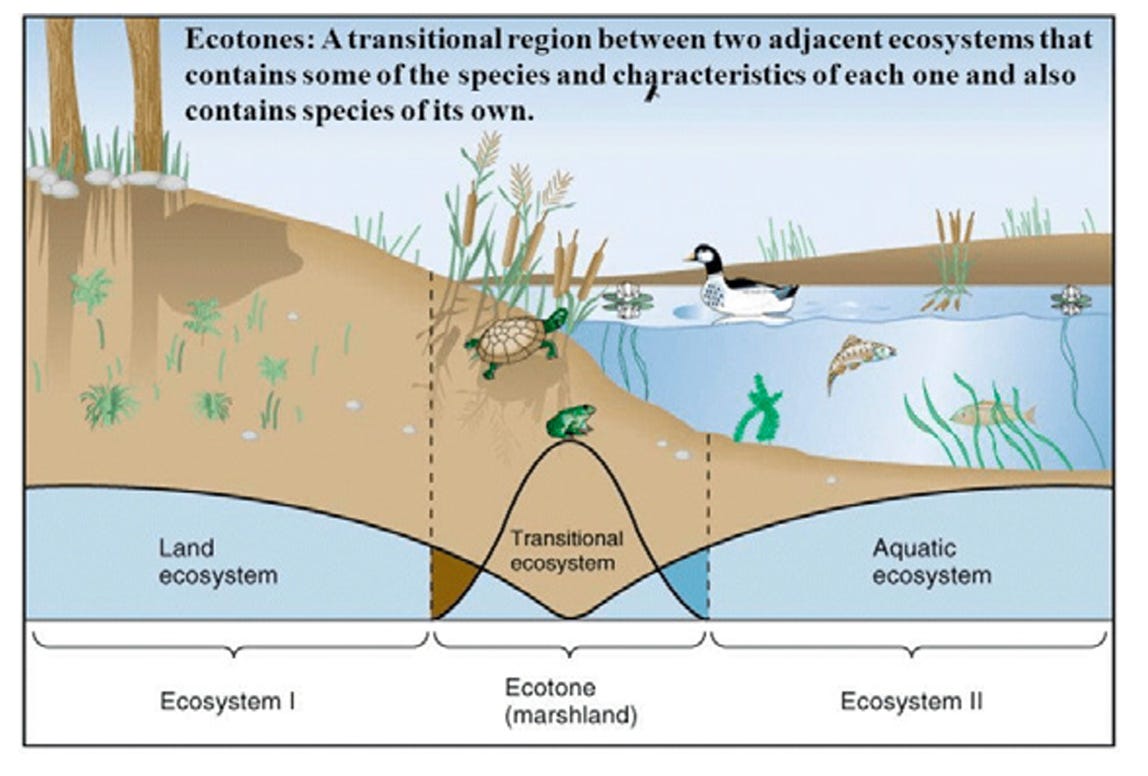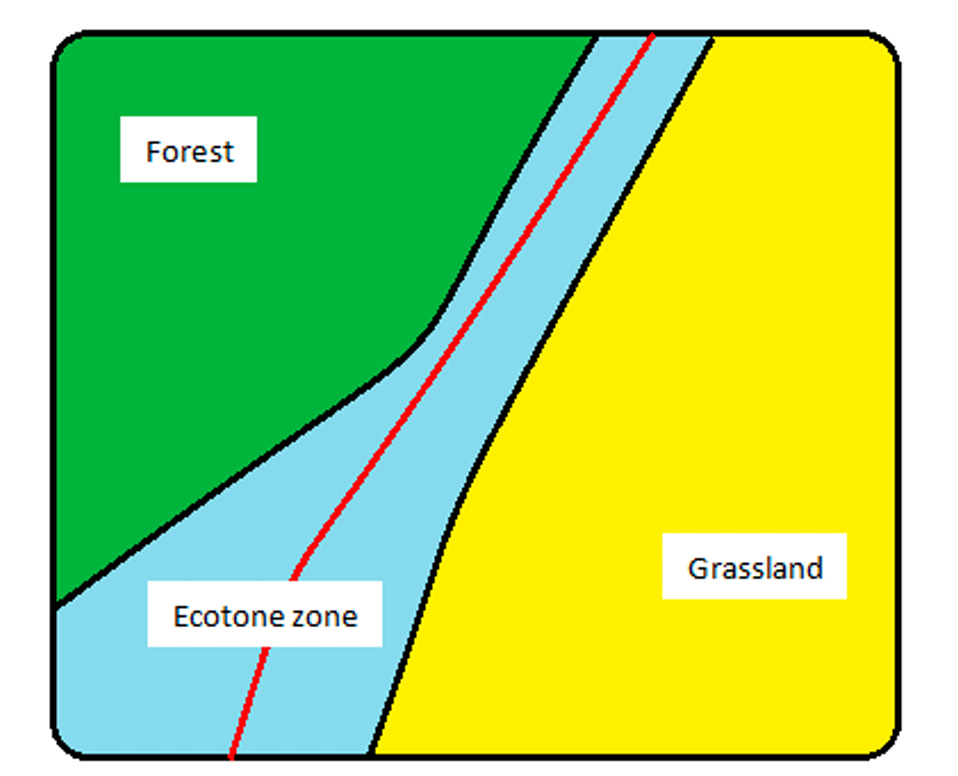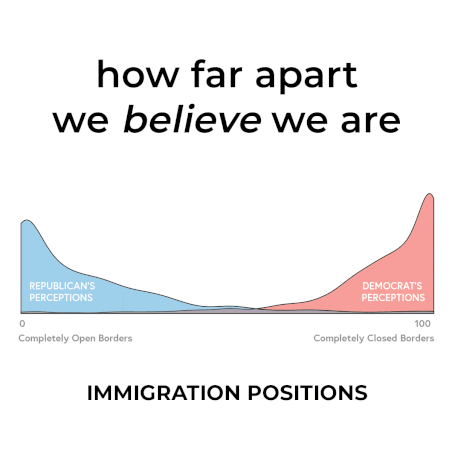Ecotones as the ultimate throughline
A look towards the interstitial spaces, where blurriness gives way to nuance and resilience.
As an artist trained in anthropology, I am driven by visualizations that make the concepts that I research clearer. I first became obsessed with the idea of an ecotone a few years ago via a book called Home Ground: A Guide to the American Landscape. It’s basically a very niche, ecological dictionary compiled by 45 poets and writers with 850 original definitions for words that describe American lands and waters. Words like aguaje, alcove, aquifer, arenal, artarque (you will need to get the book to find out what these mean). William deBuys, conservationist and writer, describes ecotones as:
“The area where two or more distinct habitats adjoin… Because it is a border zone where multiple sets of resources and opportunities become available, an ecotone tends to support greater biological diversity than either of the systems it mediates between. Delineating an ecotone, however, can be problematic. Like habitats and ecosystems, ecotones are not self-defining, as, for example, individual species are. They are human constructs, which derive their shape and character from the qualities their observers find most salient. In scientific terms, one might say that the world is composed of gradients with relative discontinuities. Put simply: things change nearly everywhere, and so nearly every place is the edge of something and shares the qualities of an ecotone.”
A blurry place in between two spaces, an edge, an ecotone! As I dug more into the ecotone, I learned how this interstitial space between two ecosystems creates a large amount of biodiversity and thus, resilience. Biodiversity strengthens ecosystems by ensuring that a wide range of species can adapt to changing conditions, making the system more robust and flexible. This ecological concept opened up a whole world of metaphors for me.
I’ve done my fair share of therapy over the years, and there is always an emphasis on “both, and”– in other words, two feelings can exist at once. Mind-blowing to me still. In one particular moment, you can be both grieving and joyous. Two realities can convene and collaborate–and maybe even be more resilient because of it. An ecotone!
Beyond emotions, ecotones have led me to a larger realization of the interconnectedness all around us. Our bodies form ecotones with the world around us. Why was this so profound to me? It seems obvious. Of course, we are deeply intertwined with nature—in fact, calling it 'nature' is unhelpful, as it suggests a separation that doesn’t really exist. We just like to pretend it does. But then I remember: I’m up against centuries of ingrained thinking, reaching all the way back to the 17th century. René Descartes, the French philosopher and scientist, introduced Cartesian dualism—the idea that mind and body are distinct, separate entities. This binary thinking has shaped Western culture ever since, not only framing how we understand our bodies but also reinforcing a false division between humans and the natural world. No wonder this 'both-and' realization feels like a leap; for hundreds of years, we’ve been conditioned to see everything in 'either-or' terms.
I wrote my first Substack about echo chambers and how finding throughlines became my way of pushing back...my way of connecting the “either-or.” As I’ve been thinking more about echo chambers, especially in the context of this year’s election, I notice an amplified tendency to shout opinions into the void. I think maybe we could all use a little ecotonal thinking (myself included) during the months to come. A reminder that the blurry space between is actually really powerful. It may be scary and full of uncertainty and vulnerability. It may ask us to admit we don’t know what we don’t know. It begs us to ask questions. To look for throughlines between seemingly oppositional viewpoints.
I recently listened to a new episode on Pulling the Thread by Elise Lohen. She interviews Jamil Maki, a professor of psychology at Stanford University and the director of the Stanford Social Neuroscience Lab, about his new book “Hope for Cynics: The Surprising Science of Human Goodness.” In their discussion of American politics, they explore research from “Beyond Conflict” that explains how polarization is fueled by Americans’ misperceptions of each other. I immediately saw an ecotone when Maki discusses findings on the disagreement divide, which uncovered Republicans and Democrats actually agree much more than they perceive they do:
We asked members of each party to rate their own views on immigration. We did not ask about specific policies, but rather about general preference for closed or open borders, noting that many people are not in either extreme. In our survey, 0 means keeping all borders completely open to all migrants and 100 means keeping all borders completely closed to all migrants. We also asked them to estimate how the average member of the other party would answer the same question. In our samples, Democrats had a median score of 35, but Republicans estimated that Democrats would have a median score of 9. Meanwhile, Republicans had a median score of 75, while Democrats estimated Republicans would have a median score of 92.
What did the data reveal? An ecotone!
Ecotones are everywhere if we look out for them. They weave in and out of my view. I see small, ecological examples (a flower growing up from a crack in the concrete) and larger, conceptual ones (the political overlap in immigration beliefs). It is within these ecotonal mindscapes that I recognize the power of nuance often obscured by our Cartesian-Western perspective.
Sophie Strand, a poet, writer and ecologist, writes of the ecotone:
“Life occurs in the overlap. In the floodplains. In the connective tissue that in a human body connects different organs and in a living earth connects different bioregions to weave together the dynamic homeostasis of the greater biosphere. Life experiments and changes and flourishes in the places where bodies meet and dialogue with each other, asking questions, and mutually changing each other.”
The ecotone constantly pushes me to look beneath surface assumptions, ask new questions, and develop a more dynamic mindset that dissolves dualistic thinking. As I learn from ecotones, I ask them to change me. I ask them to show me the resilience that lies in-between “this” and “that.”




